Introduction
The Olympus M.ZUIKO DIGITAL ED 12-50mm f/3.5-6.3 EZ is the latest kit zoom from Olympus. The equivalent of 24-100mm on 24×36, this 12-50mm is both tropicalized and motorized, and is boxed together with the latest Olympus camera, the OM-D E-M5.
While waiting for the DxOMark results for this camera, here are some results for this lens when mounted on a couple of other micro 4/3 cameras — in particular, the Panasonic GH2, whose results in principle should be quite close to those of the OM-D E-M5.
People who love zooming in when shooting video will appreciate being able to vary the zoom speed … and how very quiet the motorization is. (The motorization can be deactivated and thus videographers and photographers can have a traditional zoom ring at their disposal, as they prefer).
As for image quality, the DxOMark results will give a good idea of what people can expect from this new lens. Right off the bat, we can say that this simply isn’t a bright lens at all — certainly the 12-50mm’s biggest weak point, especially for a lens being sold at the non-negligeable price of $499. Combined with a micro 4/3 sensor — smaller than those for APS-C and full-frame cameras — and you will likely have some difficulty in obtaining high-quality photos in low-light with this lens.
Test results
Having said all this, let’s look at the standalone lab results for the Olympus M.ZUIKO DIGITAL ED 12-50mm f/3.5-6.3.
Olympus M.ZUIKO DIGITAL ED 12-50mm f/3.5-6.3 mounted on a Olympus PEN EPL2
Olympus M.ZUIKO DIGITAL ED 12-50mm f/3.5-6.3 mounted on a Panasonic GH2
No surprises here: the DxOMark score of 10 for this lens is comparable to that of other consumer kit lenses.
| Strong points | Weak points |
| Satisfactory sharpness, uniform at at f/8, maximum in the center at 12mm f/3.5 | Tolerable chromatic aberrations, except in the corners at 12mm |
| Good vignetting for this kind of zoom lens | Not a bright lens |
| Satisfactory control of distortion | |
| Compact | |
| Light-weight |
Comparison
Olympus M.ZUIKO DIGITAL ED 12-50mm f3.5-6.3 EZ vs Panasonic LUMIX G X VARIO PZ 14-42mm / F3.5-5.6 ASPH. / POWER O.I.S., both mounted on a PEN EPL2 vs Nikon 1 NIKKOR VR 10-30mm f/3.5-5.6 mounted on a Nikon 1 V1.
The Olympus and Panasonic DxOMark overall scores are identical, with very close individual metrics scores. But the Nikon 1 zoom is three points behind with a DxOMark score of 7 points, mostly due to two criteria: better resolution for both the Olympus and Panasonic lenses, but also a superior low-light sensor score for the Olympus PEN EPL2 camera. (Take a look at the sensor comparison: Olympus PEN EPL2 vs Nikon 1 V1.)
The advantages of the Olympus M.ZUIKO DIGITAL ED 12-50mm f/3.5-6.3 EZ:
- Good management of vignetting.
- Good management of distortion.
- Tropicalized.
The advantages of the Panasonic LUMIX G X VARIO PZ 14-42mm / F3.5-5.6 ASPH. / POWER O.I.S.:
- Better sharpness.
- Brighter lens.
- Better quality-to-price ratio.
- More compact.
- Lighter weight.
The advantages of the Nikon 1 NIKKOR VR 10-30mm f/3.5-5.6:
- Good management of vignetting.
- Better management of distortion.
- Better management of chromatic aberrations.
Conclusion
The Olympus M.ZUIKO DIGITAL ED 12-50mm f3.5-6.3 EZ has the same optical quality as Panasonic LUMIX G X VARIO PZ 14-42mm / F3.5-5.6 ASPH. / POWER O.I.S., providing users of micro 4/3 cameras (with their smaller sensors) with a richer array of choices.
In addition to tropicalization and a motorized zoom ring for video, this latest Olympus lens shows good control of distortion and vignetting, making it a good choice for adventurous photographers. For other photographers… well, the very nice Panasonic kit lens gives pause: for $100 less, you get slightly better optical performance (especially in terms of resolution) and significantly better compactness. This said, if you prefer using classic focusing rings, you’ll want the Olympus lens, since the Panasonic doesn’t have them.
Results for the Olympus 12-50mm lens on the Olympus OM-D E-M5 will be available shortly. (See also this review of the Panasonic LUMIX G X VARIO PZ 14-42mm / F3.5-5.6 ASPH. / POWER O.I.S.)
Panasonic LUMIX G X VARIO PZ 14-42mm / F3.5-5.6 ASPH
Enter the Panasonic LUMIX G X VARIO PZ 14-42mm / F3.5-5.6 ASPH. This very first micro 4/3 lens (with many others doubtless to follow very soon!) belongs to the new generation of lenses designed to respond intelligently to the problems posed by compactness:
- The lens by itself has a length of only 26.8mm and a weight of just 95g — ideal for the general public.
- To reduce the lens size, Panasonic modified its design philosophy by eliminating the zoom ring and replacing it with tiny levers that control zoom and focus. (In terms of ergonomics, photographers who are used to DSLR zooms will probably be disappointed.)
It remains to be seen if the optical quality of this oh-so-small zoom is similar to that of classical zoom lenses — something that DxOMark measurements will certainly ascertain.
Currently-available compatible cameras include the Panasonic GH2, GX1, and GH1, and also the Olympus PEN EPL2 (with other cameras to eventually arrive on the scene).
The DxOMark results
Complete test results are available here: Panasonic LUMIX G X VARIO PZ 14-42mm / F3.5-5.6 ASPH. / POWER O.I.S. mounted on a Panasonis Lumix DMC GH2
With a DxOMark overall score of just 10, this 14-42mm is far from any hope of climbing up on the podium with the best lenses on our website. However, its DxOMark score was impacted by a low-light use case that gives a real advantage to full-field sensors and bright lenses, so we honestly were not surprised by these results — after all, this is a kit lens for the general public, so we weren’t expecting any miracles.
| Strong points | Weak points |
| Good sharpness, uniform starting at 24mm | Too-strong distortion at 14mm (3.5%) |
| Tolerable vignetting | Significant vignetting at 14mm from f/3.5 to f/5.6 (> 1 EV) |
| Tolerable chromatic aberrations | Not very bright |
| Compact | |
| Light-weight |
The smallest kit lens contest
Since the Panasonic GF3 isn’t available yet, we used the GH2 for our measurements, given that the characteristics of their respective sensors are quite close. (We expect that the results would have been similar had we tested this lens on a GF3.)
With a DxOMark overall score of 7, the 10-30mm is not as high-quality a lens as the Panasonic 14-42mm.
But the real point of interest in this comparison is that the Panasonic GH2 / Panasonic G X 14-42mm f3.5 combination surpasses the Nikon 1’s low-light score. Two principal factors account for this: better lens resolution, yes, but also a better low-light sensor score for the Panasonic GH2 vs the Nikon 1 V1.
The strong points of the 10-30mm :
- Better-controlled distortion
- Less affected by vignetting
- Fairly insignificant chromatic aberrations
The strong points of the 14-42mm:
- Resolution sharper and more uniform across the field
- Transmission: an average gain of ½ EV for the same aperture as the competition
- More compact
- Lighter
- Less expensive
DxOMark’s choice:
For those who have not yet invested in a lens and who would like to have something very small, versatile, and not super-expensive, the Panasonic seems to be a reasonable choice. We do wish, however, that the distortion for this model was better controlled at 14mm.
The Panasonic vs Nikon kit and Olympus kit lenses
Here are the technical comparison results for the 14-42mm on a Panasonic Lumix DMC GH2, of the 18-55mm on a Nikon D7000, and the 14-42mm on an Olympus E620:
The DxOMark score here is frankly impressive: the little Panasonic kit lens does as well as the Nikon 18-55mm kit lens. (We note, however, that there were some disparities for some measured focals on the Panasonic results.)
The advantages of the Nikon kit zoom:
- Brightest of the three lenses tested
- Weak distortion (similar to that of the Panasonic)
The advantages of the Olympus kit zoom:
- Weakest distortion of the three lenses tested
- Negligeable chromatic aberrations
The advantages of the Panasonic kit zoom:
- Resolution sharper and more uniform across the field
- More compact
- Lighter
- Less expensive
Conclusion
To sum up, the Panasonic LUMIX G X VARIO PZ 14-42mm / F3.5-5.6 ASPH. / POWER O.I.S., mounted on a Panasonis Lumix DMC GH2, achieves scores equivalent to entry-level kit lenses mounted on APS-C-sensor cameras. Obtaining comparable quality with a camera/lens combination that is half the size is certainly not a bad result! All that remains is to see the results for the even smaller Panasonic GF3 or Olympus PEN EPM 1 in order to determine which has the best quality-to-bulkiness ratio. But in any case, this 14-42mm lens is a clear win for Panasonic!
(Please keep in mind that these tests and this review do not cover certain other important aspects of lens evaluation, such as the precision of the zoom’s movement and focusing, the overall ergonomics of the system, etc.)
Panasonic Leica Summilux DG 25mm f/1.4
Announced in June 2011 at the same time as the Panasonic Lumix DMC GF3, this lens is the equivalent of a 50mm for a 24 x 36mm frame.
This lens is a rather high-end lens that is intended for those who want to work without using flash even in low-light conditions.
Further, the reduced depth of field inherent to its wide aperture will allow users to isolate their subjects, making this a lens that appears to be ideal for still life and portraits — at least on paper. But it’s important to verify the following points relevant to those particular use cases:
- Good resolution and uniformity in the field, even at wide aperture.
- Sufficient brightness.
- Relatively good control of distortion and chromatic aberrations.
For the moment, DxOMark measurements for the Panasonic Leica Summilux DG 25mm f/1.4 are available for the following cameras:
- Panasonic Lumix DMC G1
- Panasonic Lumix DMC GH1
- Panasonic Lumix DMC GH2
- Panasonic Lumix DMC GX1
- Olympus PEN EPL2
Measurements for other cameras, such as the Olympus PEN EP3, the Olympus PEN EPM1, and the Panasonic Lumix DMC G3 and GF3 will be available soon.
Panasonic Leica Summilux DG 25mm f/1.4 mounted on an Olympus PEN EPL2
Panasonic Leica Summilux DG 25mm f/1.4 mounted on a Panasonic Lumix DMC GH2
With a DxOMark score of 20 on both the Panasonic GH2 and the PEN EPL2, the Leica 25mm f/1.4 achieves very good results, very close to those of the other high-end micro 4/3 lenses reviewed recently.
As with the M. Zuiko Digital ED 12mm f/2.0 and the M. Zuiko Digital ED 45mm f/1.8, the sharpness for this lens is what it should be on the GH2 and even on the lower-resolution PEN EPL2. So we expect that its results on an Olympus OM-D EM5 will be similar as well.
| Strong points | Weak points |
| Optimal use from f/1.4 to f/4 | Visible distortion |
| Very good sharpness, uniform starting at f/2.8 | A maximum loss of brightness of 1.2EV in the corners at f/1.4 (but the flaw disappears starting at f/2.8). |
| A bright lens | Chromatic aberrations visible in the corners |
| Very good quality-to-price ratio | |
| Light-weight lens |
Comparisons
Panasonic Leica 25mm f/1.4 vs Olympus M. Zuiko Digital ED 12mm f/2
Here we compare the two lenses on a Panasonic GX1. The uses are different, of course: on the one hand, you have a wide-angle, and on the other, you have a more general-use lens. But still, these 4/3 prime lenses have a lot in common:
- The same strong points:
- Good sharpness both in the center and in the field.
- Good brightness (a T-stop of 1.7 for the Leica and 2.2 for the Zuiko).
- The same weak points:
- Distortion a bit strong.
- Perceptible chromatic aberrations.
As for the housing finish, we prefer the Zuiko. The Leica is mostly plastic (except for the metal mount).
Panasonic Leica Summilux DG 25mm f/1.4 on a Panasonic GH2 vs Nikon 1 NIKKOR 10mm f/2.8 on a Nikon 1 V1
The verdict is in and cannot be appealed: the 12-point difference in DxOMark score in favor of the Leica 25mm puts it clearly ahead of the Nikon 10mm.
As with our review of the Olympus M. Zuiko Digital ED 12mm f/2.0, we regret the lack of lens available on a Nikon 1.
The advantages of the Panasonic Leica Summilux DG 25mm f/1.4:
- Better resolution and uniformity in the field.
- Much brighter.
- A superior quality-to-price ratio.
The advantages of the Nikon 1 NIKKOR 10mm f/2.8:
- Distortion is better corrected.
- Half as expensive.
- 2.5 times lighter and much more compact.
Conclusion
Our measurements of the Panasonic-Leica lens confirm that micro 4/3 lenses are quality optics, with results at least as good as those for entry-level APS-Cs. Still, pay attention to the autofocus speed — the weak point of hybrid cameras (but a priori showing some improvement with the latest Panasonic and Olympus models).
For this lens in particular, the price seems a bit high, so don’t hesitate to take a look at the latest Olympus prime lenses in the same price range (the Olympus M. Zuiko Digital ED 12mm f2.0 and the M. Zuiko Digital ED 45mm f1.8). They have the same optical performance, but a better housing finish. This said, if you want the equivalent of a 50mm lens on your micro 4/3, the Leica is the lens for you — at least for the moment.
With the Panasonic Leica DG Macro-Elmarit 45mm F2.8 ASPH OIS, we have a Leica optical design, optical image stabilization (OIS), aspherical glass elements, and all in a very compact lens intended for macro-photography that stays true to the design and spirit of micro 4/3 technology.
To provide such impressive specs, Panasonic teamed up with Leica to create a lens with an intricate optical design that features 14 glass elements in 10 groups.
By contrast to the Olympic Zuiko 45mm f/1.8, this lens is specifically designed for use as a macro (making it the first micro 4/3 macro lens).
The description is enough to make one drool — all the more reason to take a good look at the Leica Elmarit 45mm’s DxOMark test results.
Measurements
Panasonic Leica DG Macro-Elmarit 45mm F2.8 ASPH OIS mounted on a Panasonic GH2
Alas, a DxO Mark score of 13 points… isn’t all that great.
The good points of this Panasonic Leica DG Macro-Elmarit 45mm F2.8 ASPH OIS lens:
- Good resolution.
- Zero distortion.
- Optical image stabilization (OIS)
The “debatable” points for this lens:
- Somewhat weak transmission.
- Vignetting is a bit too noticeable.
- Its price.
Comparison
Olympus M. Zuiko Digital ED 45mm f1.8 vs Panasonic Leica DG Macro-Elmarit 45mm F2.8 ASPH OIS, both mounted on a Panasonic GH2
Against a DxO Mark score of 17 for the Olympus, Panasonic loses the battle of the 45mm lenses, even if the use cases are slightly different for the two lenses.
The advantages of the Panasonic Leica DG Macro-Elmarit 45mm F2.8 ASPH OIS:
- Better correction of distortion (although that of the Olympus is negligeable).
- Stabilization (OIS).
The advantages of the Olympus M. Zuiko Digital ED 45mm f/1.8:
- A brighter lens.
- Better handling of vignetting.
- Better correction of chromatic aberrations.
Another interesting comparison: Panasonic Leica DG Macro-Elmarit 45mm vs ZUIKO DIGITAL ED 50mm f/2.0 Macro (full results for the Olympus 50mm will be available shortly).
Conclusion
On the basis of optical quality, a Panasonic Leica DG Macro-Elmarit 45mm F2.8 ASPH OIS lens is not about to dethrone an Olympus M. Zuiko Digital ED 45mm f/1.8. Still, it has some features that may very well merit a second look:
- While less bright than the very good Zuiko 45mm f/1.8, the Leica’s stabilization feature (which we have not evaluated here) should permit some recovery by varying the exposure time. Stabilization is also a real plus in macro mode.
Thus this Leica-branded 45mm has certain advantages over the Olympus 45mm. However, those who are looking for a lens with which to take portraits will prefer the Zuiko.
After our review of the MZuiko 12mm f/2.0, here is the Olympus M. Zuiko Digital ED 45mm f/1.8, also announced in June 2011. With identical finishes, these are two upscale and very high-quality micro 4/3 lenses.
As an ideal lens for portraiture, this bright 45mm (the equivalent of an 85mm lens for a 24x36mm camera) greatly enhances the micro 4/3 lens line.
Let’s first take a look at the standalone results for this lens:
Olympus M. Zuiko Digital ED 45mm f1.8 mounted on an Olympus PEN EPL2
With a DxOMark score of 17, Olympus has once again achieved a great result for such a small sensor format.
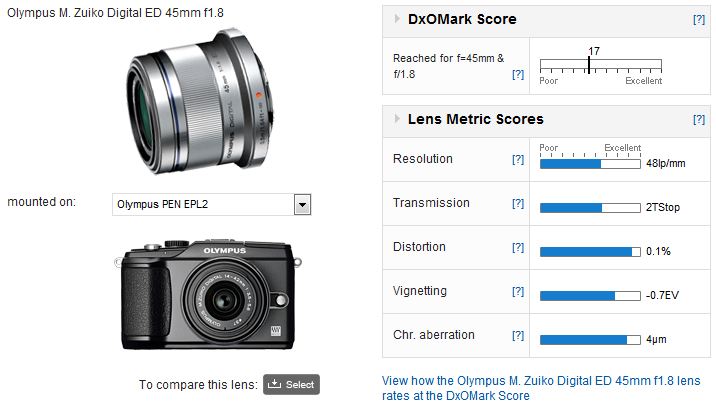 The strong points of the Olympus M. Zuiko Digital ED 45mm f/1.8 :
The strong points of the Olympus M. Zuiko Digital ED 45mm f/1.8 :
- A bright lens.
- Well-controlled distortion.
- Very little vignetting, essentially gone at f/2.0.
- Very good control of chromatic aberrations.
- A good quality-to-price ratio.
- A light-weight lens.
All signals are green, except that—
- The resolution is satisfactory, but astonishingly enough, it is slightly weaker in the center than that of the 12mm.
- The uniformity is not as good has one might expect from a lens that is the equivalent of an 85mm.
Comparisons
Here’s an interesting, if rather daring set of comparisons: How well will this 45mm perform against 85mm lenses on the latest-available full-frame cameras? (Remember that this 45mm is comparably bright.) To get an idea, we offer two such comparisons below.
Germane to our analysis is the fact that the 85mm lenses we use here for comparison are among the those with the highest DxOMark scores (along with a few 100mm lenses). Whether Nikon or Canon, globally these lenses are very sharp, with practically no distortion and very well-controlled chromatic aberrations.
Is this also the case for the Olympus lens?
(Note: Results for all PEN cameras — EP1, EP2, EP3, EPL3, EPL1, and EPM1 — will be published in the very near future.)
First comparison: Olympus M.Zuiko Digital ED 45 mm f/1.8 vs Canon EF 85mm f/1.8 vs Nikon AF-S 85mm f/1.4G (the 45 mm is mounted on a EPL2, and the two 85 mm lenses are mounted on a 5D Mark II and a Nikon D3x, respectively):
No surprises here: The results for the 85mm lenses coupled with full-frame cameras are markedly better than those for the 45mm. This said, we point out that the optical performance scores for the Olympus are very similar apart from resolution.
This lens has everything required of a good 85mm:
- Practically zero distortion
- No chromatic aberrations
- Very well-controlled vignetting
Second comparison: Olympus M.Zuiko Digital ED 45 mm f/1.8 vs Canon EF 85mm f/1.8 vs Nikon AF-S 85mm f/1.4G, with the Olympus mounted on a Olympus PEN EPL2, and the 85mm lenses mounted on APS-C cameras (the Canon EOS 7D and the Nikon D7000, respectively).
Here the comparison is much more controversial — the scores are almost identical for these three combinations. Brilliant!
In conclusion…
We have here another very fine and impressive lens, and one that is fully capable of holding its own against APS-C cameras and also against certain full-frame models (for a convincing example, see the results for the Sony 85mm 2.8 on a Sony A900).
The results are convincing: in terms of image quality, these micro 4/3 modules are a clear success. Olympus certainly appears to have risen to the challenge of combining compactness with quality!


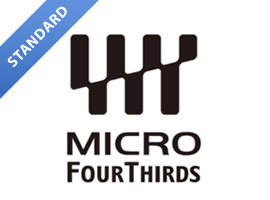
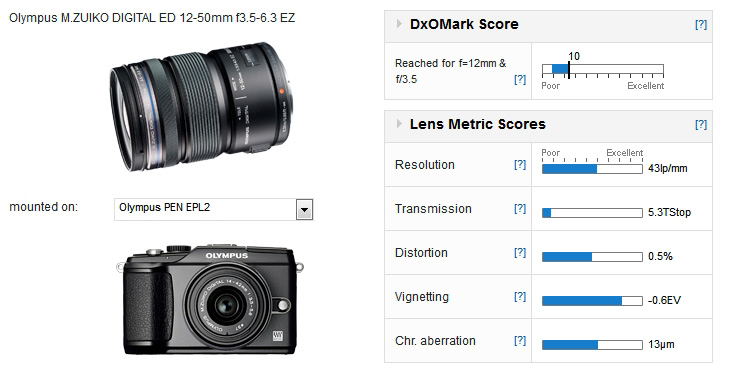
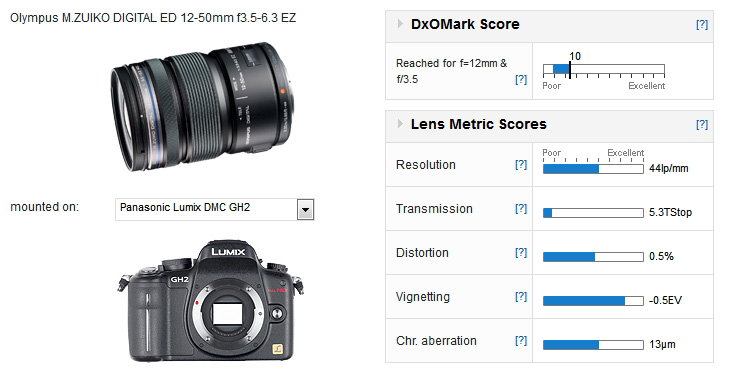
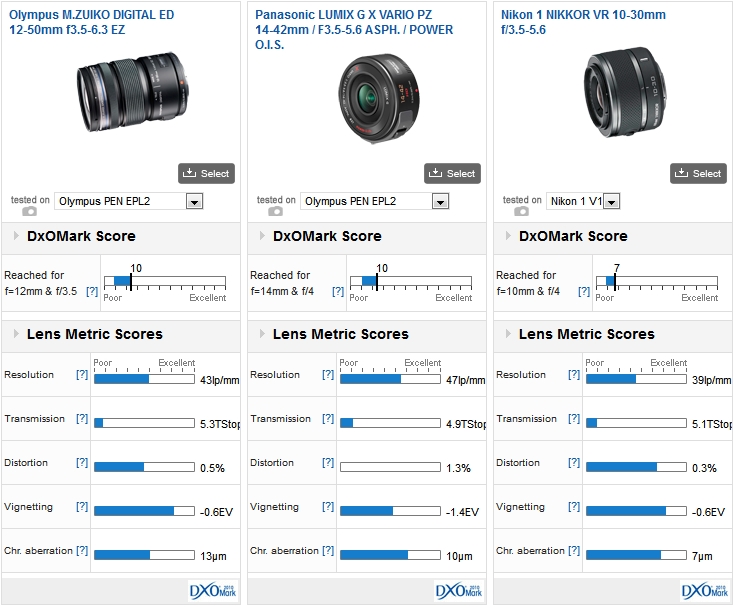
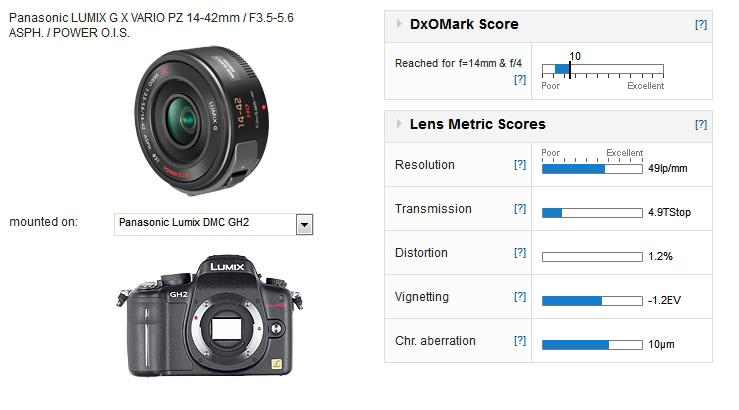
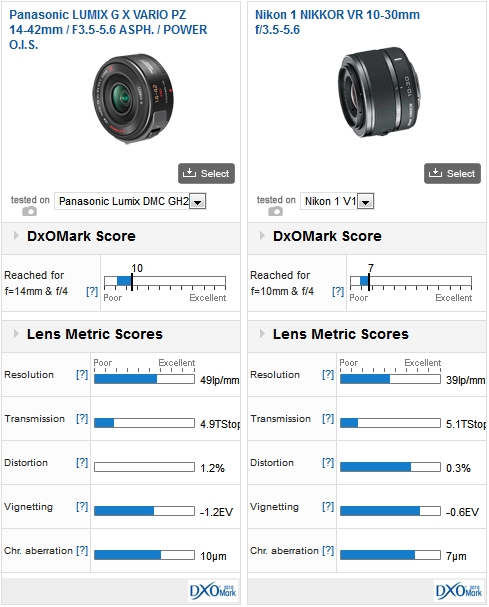
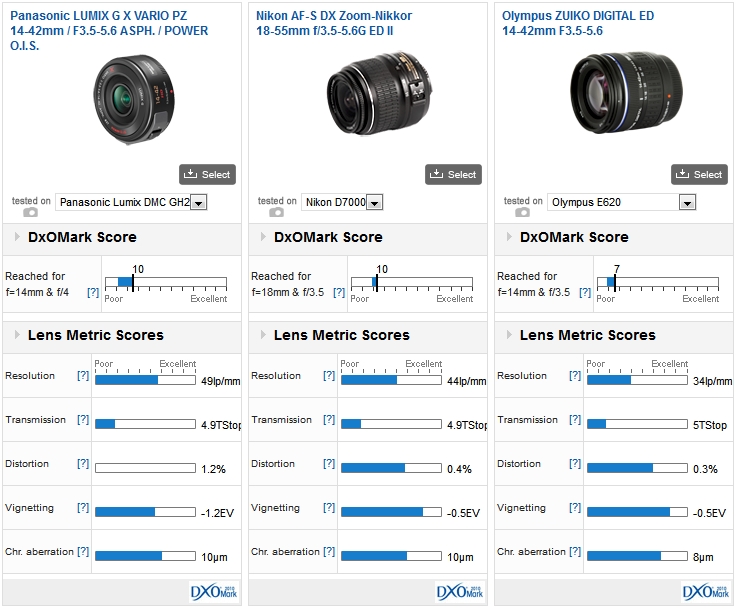
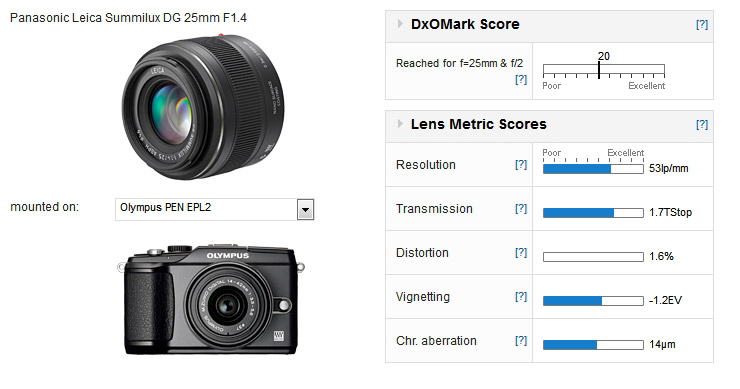
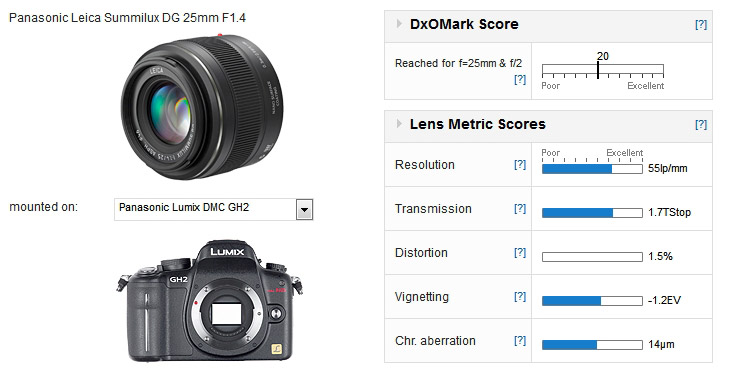
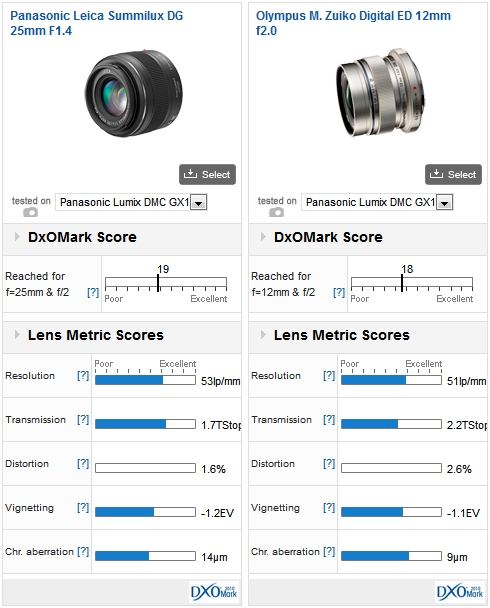
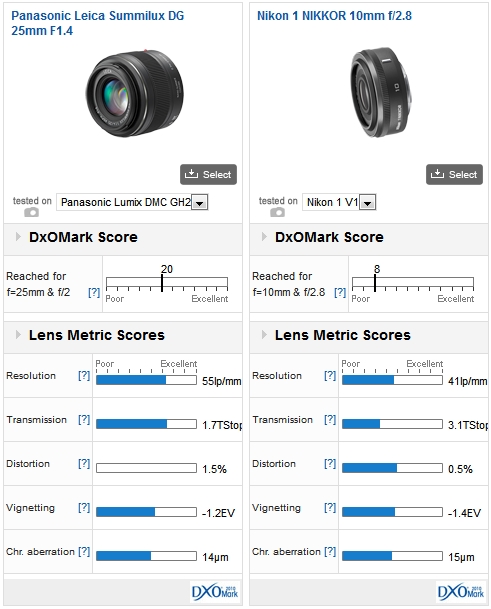
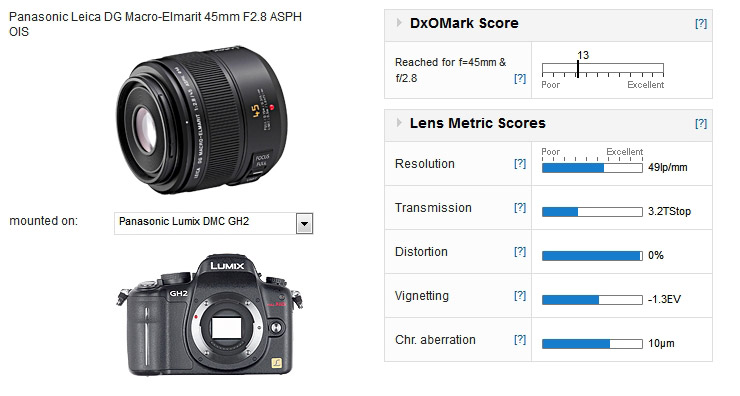
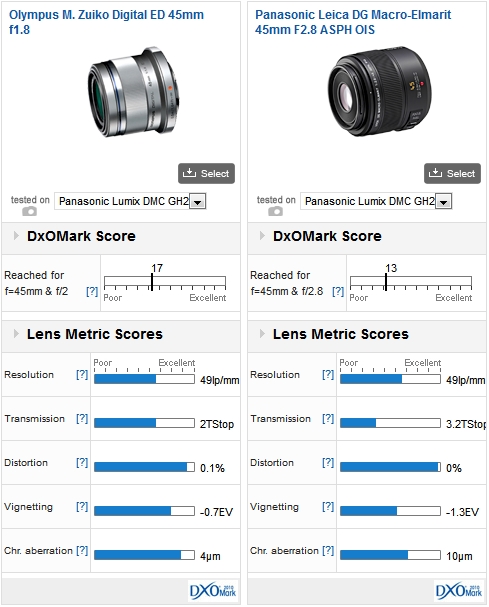
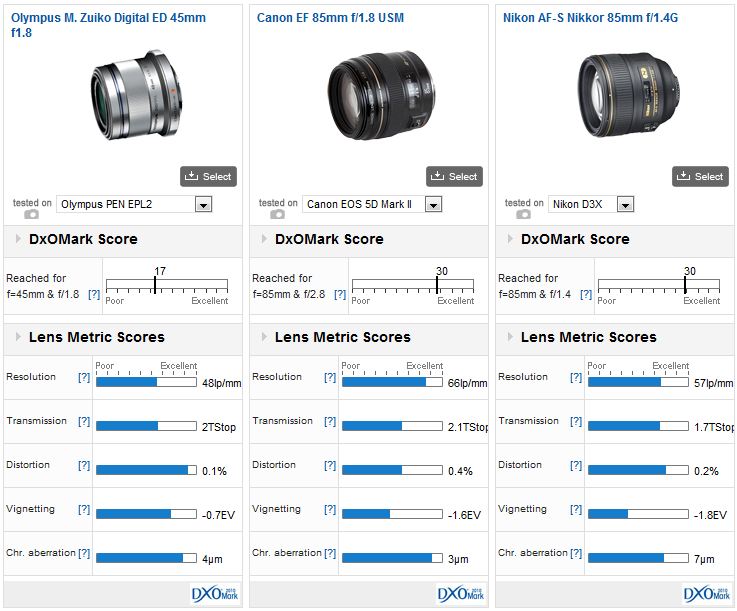
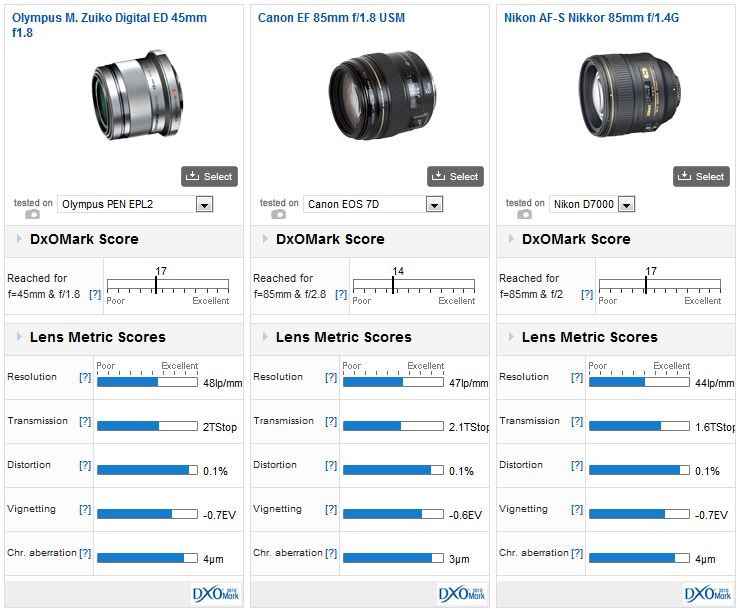
DXOMARK encourages its readers to share comments on the articles. To read or post comments, Disqus cookies are required. Change your Cookies Preferences and read more about our Comment Policy.